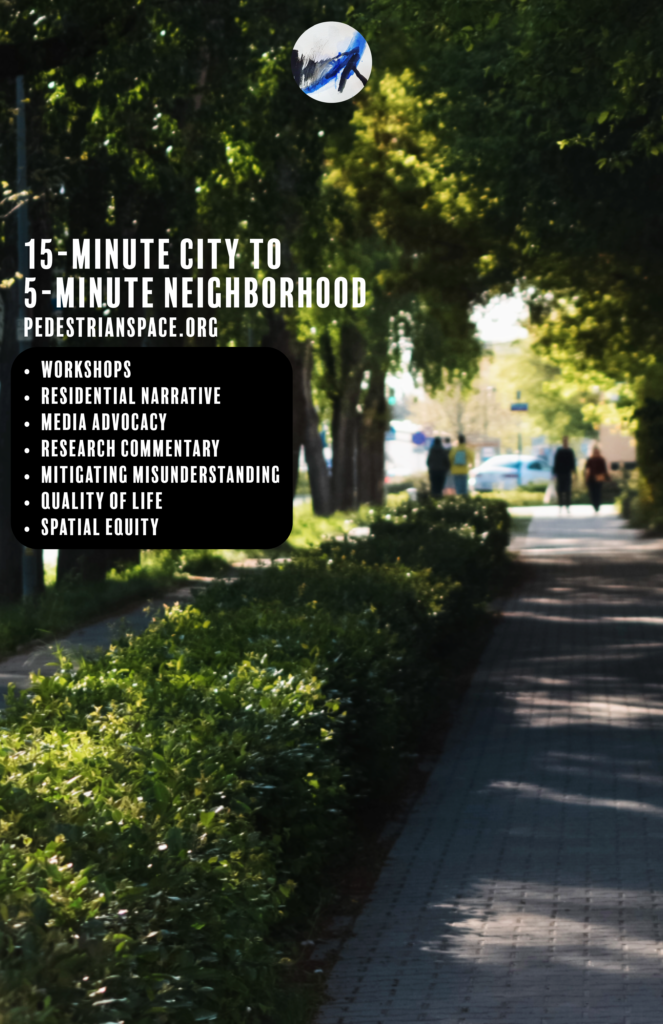
Here at Pedestrian Space, we have been documenting and cultivating dialogue on the topic of the 15-minute city, a dynamic contemporary planning paradigm with historic roots, since Spring 2020.
We believe in the great potential for this planning paradigm to serve community leaders, planners, municipal administrations and more in their visions and goals to enhance spatial equity, proximity to diverse services and quality of life.
We even believe in the potential for the controversy that cropped up around the topic to serve as a pivotal opportunity for dialogue and awareness shaping on constructive civic engagement and mitigating miscommunication and misunderstanding around the theme.
Visit diverse coverage on the 15-minute city concept here at Pedestrian Space

At Pedestrian Space, diverse coverage on the 15-minute city includes:
•Sharing about 15-minute city workshops & talks we have done
•Sharing about Residential Narratives on the concept as captured through surveys as well as workshops
•Media Advocacy on the concept
•Research commentary on the concept
•Mitigating misunderstanding & aspects of controversy related to the topic
•Centering issues of Quality of Life as well as Spatial Equity when discussing the concept as a principle of healthy urbanism

USEFUL READING & REFERENCE:
- CHAIRE ETI White Paper Number 3: The 15-minute city model: An innovative approach to measuring quality of life in urban settings
- Introducing the “15-Minute City”: Sustainability, Resilience and Place Identity in Future Post-Pandemic Cities, by Carlos Moreno, Zaheer Allam , Didier Chabaud, Catherine Gall and Florent Pratlong
- The 15-minute city offers a new framework for sustainability, liveability, and health by Zaheer Allam, Mark Nieuwenhuijsen, Didier Chabaud, Carlos Moreno
- Interview with Prof Carlos Moreno, sustainable design and urban planning expert, C40 Cities

We have organized multiple 15-minute city workshops. Below you can have a peek at the thematic topics and some images live from the workshops.



The 15-minute city concept is a central part of my research & it is also a valuable lived experience & value for how I want to inhabit space & my local community. Read more on this at the above link. -Annika
